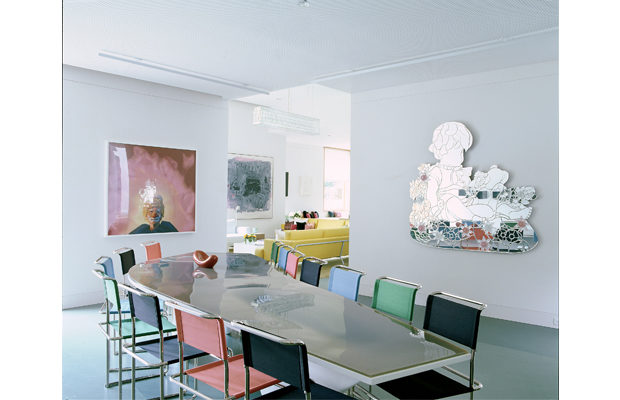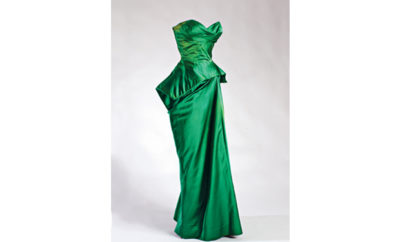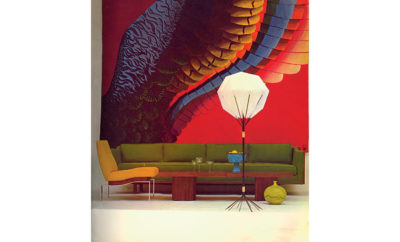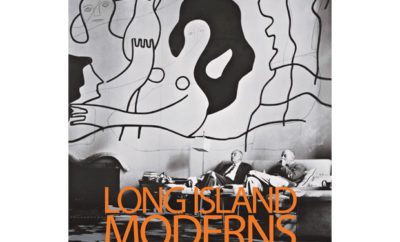
Feature
Jonathan Caplan Designed Home

The dining room is furnished with a Zaha Hadid “Aqua” table surrounded by reissued tubular-metal and canvas chairs designed by Marcel Breuer in the 1920s. A Cindy Sherman clown photo hangs on one wall, a Jeff Koons mirror piece on another.
See Saw
Although some critics have already announced the end of America’s recent cultural construction boom—as if building activity has not always responded to the ups and downs of economic cycles—what is unlikely to change, regardless of the Great Recession, is the influential coast-to-coast network of arts benefactors that has spread and intermeshed during the past two decades. While the members of this informal elite are scattered across the country, they see quite a bit of each other through their ties to arts organizations that increasingly draw support from a national constituency.
Trustees not only of their local museums but also supporters of groups with national or international reach (such as the Dia Art Foundation or American Patrons of Tate), these avid collectors keep a close eye on what their friendly competitors are up to at art fairs, auctions, and exhibitions they gladly fly thousands of miles to attend. Woe betide the hostess in an art-aware American city who tries to schedule a social event that conflicts with the opening of the TEFAF Maastricht fair in March, or in June during one of those years that aligns the trifecta of the Venice Biennale, the Documenta show in Kassel, Germany, and the Basel Art Fair.
A noteworthy number of these collector-benefactors are women. Many are part of a husband-wife team with equal interest in art; others are the prime movers whether currently or no longer married. Among this group of “ladies who launch” are Agnes Gund of New York, Virginia Wright of Seattle, Judy Dayton of Minneapolis, Mimi Haas of San Francisco, Deedie Rose of Dallas, and Constance Caplan of Baltimore, to name but a few. Interestingly, even though all are primarily known for their interest in modern and contemporary art, they also have a parallel interest in modern architecture and design. Their homes never seem to be merely live-in galleries or storage facilities for paintings and sculptures destined to go to the local museum in due course. Often they’ve engaged an architect with gallery-design renown (for example, Arthur Erickson for the Wright house, and Antoine Predock for the Rose house), and have furnished the interiors with modern and contemporary decorative art objects that complement their paintings and sculptures far more interestingly than the obsessively understated interiors favored by many American collectors a generation ago.
To that short list of American art collectors’ homes guaranteed to pique the admiration (or envy) of a been-there-seen-that peer group of connoisseurs is the recently completed residence of Constance Caplan. Her new 7,500-square-foot house in a Baltimore suburb was designed by her architect son, Jonathan Caplan, of the New York firm Project-Space. Though she is a board member of the Hirshhorn Museum and Sculpture Garden in Washington, D.C., and New York’s Dia Art Foundation, Connie Caplan (as she is called by her friends) believes in remaining closely tied to her community. She has served as chairman of the Baltimore Museum of Art and a trustee of the Walters Art Museum, and sits on the board of Johns Hopkins University, to name only three of her local affiliations. Nonetheless, the Caplan house seems to exist in the same site-nonspecific landscape and timeless continuum of such other all-time-great treasure-holding houses of high modernism as Raymond Nasher’s one-story 1950 house by architect Howard Meyer in Dallas.
Jonathan Caplan’s design for his mother may derive in essence from the Modern Movement paradigm of the minimalist, flat-roofed rectangle as devised by Ludwig Mies van der Rohe during the 1920s, and epitomized by his German Pavilion at the Barcelona International Exposition of 1929. But Caplan the architect extends and enriches that long-established concept with subtle variations that demonstrate his awareness of art-conservation requirements. (Mies himself was insufficiently attentive to such considerations. Most notably, the entry-level exhibition spaces of Mies’s Neue Nationalgalerie of 1965-1968 in Berlin were largely unusable because of the harsh light conditions imposed by the structure’s floor-to-ceiling glass window walls.)
At the Caplan house, in contrast, Jonathan Caplan conveys a feeling of exceptional volumetric lightness and even the illusion of peripheral transparency. It seems a remarkable sleight of hand, given the house’s windowless front façade and the cladding of pale gray Swiss granite precut into thin rectangular strata of varying widths. Windows, for the most part, are floor-to-ceiling rectangles confined to the structure’s other three exposures. Despite their large size, the windows do not undermine the overall feeling of solidity.
A perfect counterpoint to the architect’s cubist composition is provided by the Cor-Ten steel cubes of a sculpture commissioned from Richard Serra and placed on the front lawn. The work is titled Pink Flamingos, a reference both to the kitschy garden ornaments of 1950s suburbia and the 1972 cult movie of the same name, directed by Baltimorean auteur John Waters, a friend of Connie Caplan’s and, like her, an inveterate booster of their hometown.
Visitors first pass into a small entry hall, which is wittily hung with one of Roy Lichtenstein’s Mirror paintings, the early-1970s canvases in which the artist played with notions of reflection and opacity. Though most collectors crave Lichtenstein’s cartoon-inspired weeping women, the esoteric Mirror series is particularly esteemed by art-world insiders and serves almost as a secret membership badge among connoisseurs with an eye for underappreciated masterworks.
The central role that art plays in the life of this house and its owner is signified by the six rows of saw-toothed skylights that sit above the central, elevated portion of the structure. Thanks to the roof glazing, this majestic, otherwise windowless gallery is flooded with the strong, even northern light. The illumination is magical—on par with that in such intimately scaled but capacious art-display spaces as Max Gordon’s Saatchi Gallery of 1985 in London. Here Connie Caplan has installed a Donald Judd shelf sculpture that emphasizes the gallery’s height. Other works are likely to be rotated in or out of display, as she reconsiders her collection.
“It changes, but I’ve been somewhat independent,” Caplan says with notable understatement, given her reputation for ignoring commercial trends and spotting artworks that later win a wider audience. “I do rethink the collection from time to time, but if I sell, it’s only to buy.” Recent purchases encapsulate Caplan’s broad range: two pieces by the chameleon-like German painter Sigmar Polke, an early sculpture by the minimalist Judd, and works by two very different Italians, the Arte Povera master Michelangelo Pistoletto and the global-minded conceptualist Alighiero e Boetti.
The domestic portions of the house feel less monumental than the central gallery—not only because of their somewhat lower (but still generous) ceiling heights, but also because the artworks in those spaces are so well-balanced by the scale of furnishings that they neither fade into insignificance nor seem imposing. Jonathan Caplan designed a number of the furnishings, including a layered Lucite-and-silver coffee table in the living room and a built-in cantilevered bed-and-nightstands in the small guesthouse.
One of Caplan’s most audacious decorative-arts acquisitions is architect Zaha Hadid’s Aqua table of 2005, an undulating pond of resin placed in the center of the dining room. The collector tamed what might have been a tyrannical domestic beast by surrounding the table with a colorful array of Marcel Breuer bent-metal-tube-and-canvas dining chairs, reissued from a design first made in the 1920s. Here and there throughout the house are biomorphic postwar pottery vessels by the French artist Georges Jouve, which are quite different in feeling from another recent rediscovery—small but powerful ceramics from Ettore Sottsass Jr.’s 1969 Tantra series.
Another area of collecting interest has been what Caplan describes as “silver that looked modern for its time,” a rubric that encompasses some seventy-five pieces by design greats ranging from Christopher Dresser to Frank Gehry. This assemblage began during Caplan’s marriage to her late husband, who headed their family-owned real-estate firm.
“We lived in a Georgian house with shelves in niches that needed to be filled with something,” she explains. “I hope that the things I collect are intellectually challenging, because I don’t think it works when you lose interest in something or it no longer has much meaning for you. I feel so lucky to be able to live with things that give so much back to me every day.”
Photographs by John M. Hall
Martin Filler writes for The New York Review of Books and its recently launched blog.












